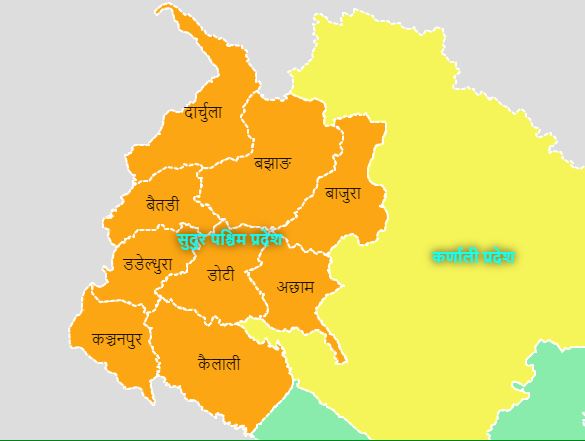Swab collection slows down
DHANGADI, JULY 12
Swab sample collection in Sudurpaschim Province has slowed down amid calls for increasing PCR tests to effectively deal with the COV- ID-19 pandemic.
There is need to follow standards for collecting swabs. Swab samples are being collected only from corona suspects, those who are RDT positive and have come in contact with the infected.
This had caused delay in collecting swabs, said Narendra Singh Karki, chief of the Health Division, the Ministry of Social Development.
Only 601 swab samples were collected in the past two weeks against 500 to 600 samples collected on a daily basis two weeks ago, according to data with the ministry.
As of yesterday, 911 samples are yet to be tested, said the ministry. The number of new infections is decreasing.
Yesterday, only three new infections were found in Kanchanpur, taking the total tally to 3,758 in the province.
Till date, Kailali tops the list with the highest number of virus infected persons in the province. Total tally in the district has reached 994 followed by 592 in Achham, 535 in Doti, 446 each in Bajura and Kanchanpur, 298 in Baitadi, 269 in Darchula, 159 in Bajura and 19 in Doti.
Kailali perhaps has reported the highest number of cases in the country.
According to Regional Health Director Dr Gunaraj Awasthi, decline in the number of people arriving from India and people staying in quarantine might have contributed to decreasing cases of the virus.
“Swab collection rate has also gone down these days as we have not been updated with people’s entry into the country from various border points. We are preparing to take swab samples of people kept in quarantine facilities in the province within the next four or five days,” he said.
Health workers here admit that there is a risk of virus spread in the community due to lack of proper management of people entering the country from various border points. As of yesterday, the death toll in the province had reached eight.
The province had reported the first case on March 27.
A version of this article appears in e-paper on July 13, 2020, of The Himalayan Times.






